Thanks to the artist/architect César Manrique, Lanzarote, Spain has been transformed from a volcanic wasteland into art, preserving both its character and its natural environment. Although Lanzarote’s history of volcanic devastation from seven years of unrelenting eruptions in the 1700s left it a forbidding place, covered in rough lava and layers of volcanic ash, Manrique saw the beauty and set his talents to redirecting the future of the island’s tourism, then in its infancy. Determined to avoid the over-development he’d seen elsewhere, Manrique set Lanzarote on an environmentally and culturally inspired course.
Manrique grew up on Lanzarote, one of the seven Canary Islands, but one that had been overlooked by tourism. He moved to Madrid to study art, but never forgot the lava caves, black beaches and craggy cliffs he had explored as a child.
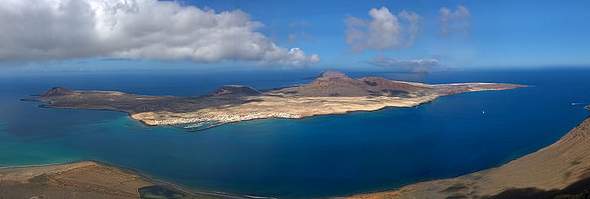
At the Top of a Volcano
One of the first places visitors should head to for a sense of the volcanic impact, as well as for views of the dramatic lava fields and formations, is Timanfaya National Park. Here they will be introduced to César Manrique’s work, the Islote de Hilario observation complex at the summit of one of the volcanoes and El Diablo, the restaurant inside it. He also designed the striking sign at the park entrance, which became an icon for the park.
Transforming a Volcanic Tube
At Jameos del Aqua, in the forbidding terrain of Malpais de Corona, Manrique transforms a gigantic tubular bubble in the black lava into a semi-underground restaurant with a natural pool and an auditorium. A jameo is a hole where the roof of a volcanic tube has collapsed, and joining two of these with stone stairs and walkways, he built another pool, startlingly white against the black lava.
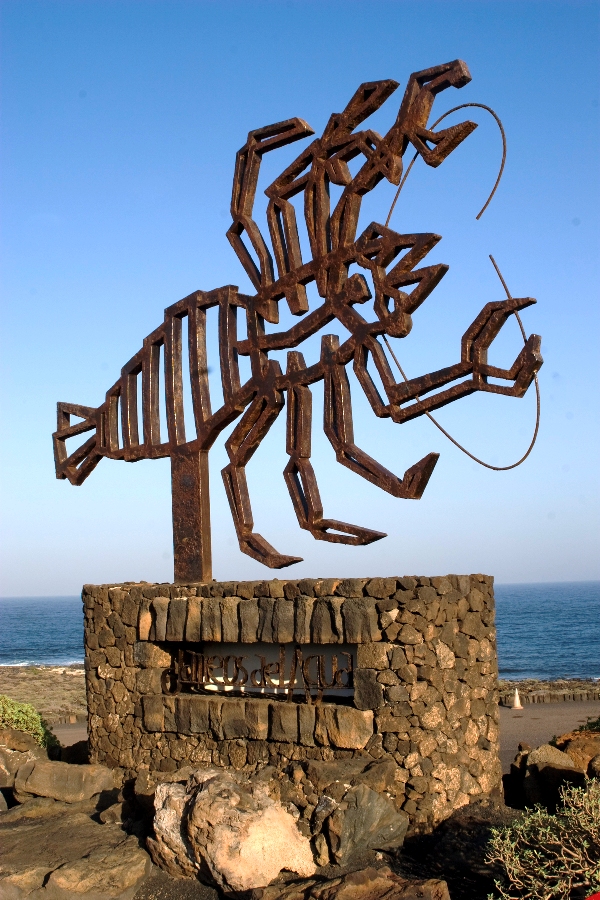
Monumental Cubism
Bold, white, free-flowing walls, rough natural stone and the sharp contrasts of white against the black lava are characteristic of Manrique’s vision for the island, and Monumento al Campesino in Mozaga shows it off well. A 45-foot white cubist sculpture, “Fertility”, towers above the cultural center, where craftsmen exhibit and demonstrate in studios. All around it, gardens of native plants relieve the rough, dark malpais landscape.
César Manrique’s Home
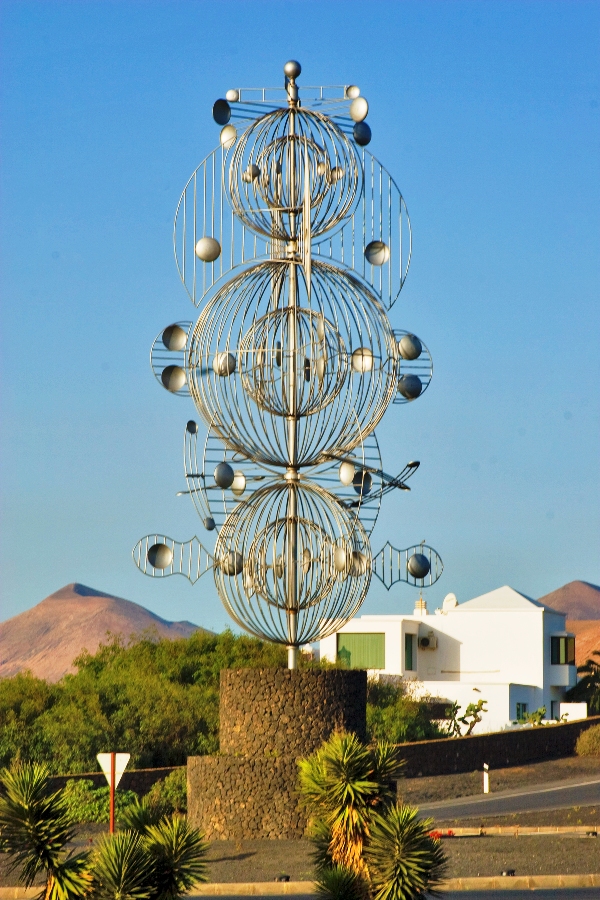
These sights are only a hint of what’s to come at César Manrique’s home, Taro de Tahiche, built into a partly collapsed lava tube with dramatic sky-lit rooms and art exhibition space. Above-ground portions of the building look like a traditional white island house, but inside, an open passage leads down into five subterranean sitting rooms, each in a rounded space left by a volcanic gas bubble. These have central openings to the sky, and some have trees planted under the opening. Long deep benches carved into the rock are covered with large cushions of crimson or white.
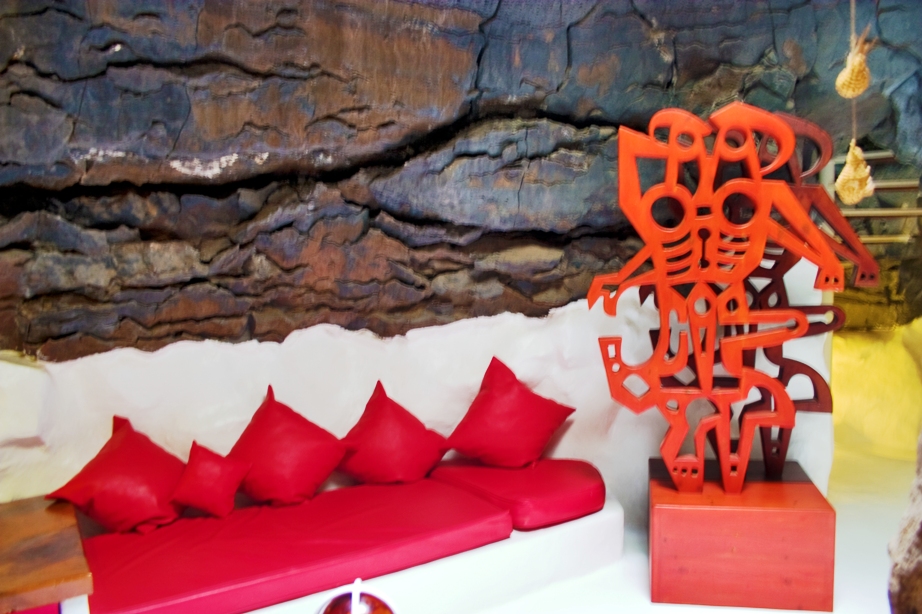
Guns Into Views
At Mirador del Rio, at Lanzarote’s northeast tip, a Spanish-American War gun battery atop a jagged vertical drop becomes dramatic overlook. The 1500-foot cliff and the view of the sea and islands below doesn’t need any enhancing, but the adaptation of this vertigo-inspiring corniche blends into the landscape with stone walls and protects visitors on windy days with a solid wall of glass. Only a beautifully undulating staircase spiraling up to the second level distracts the eye from the view.
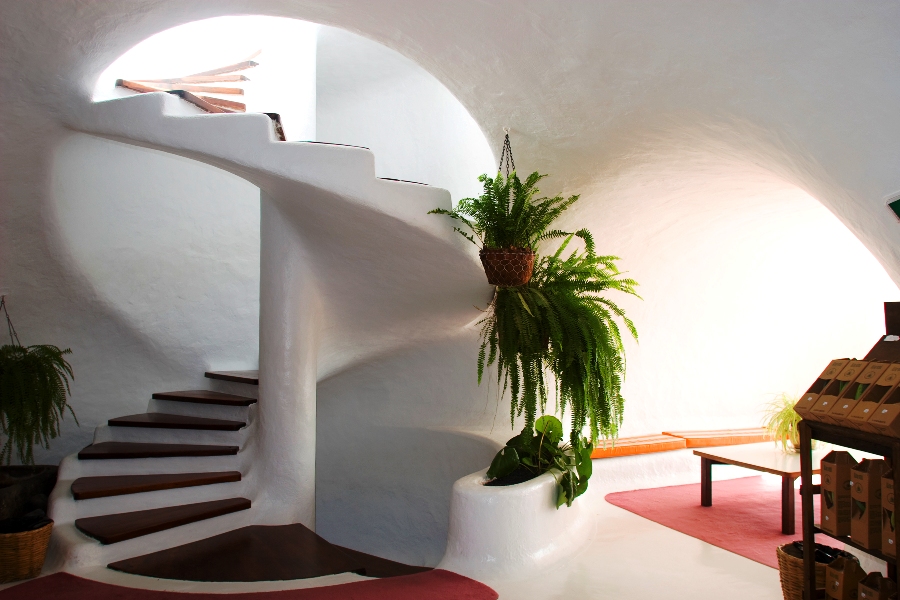
Cactus Garden in a Quarry
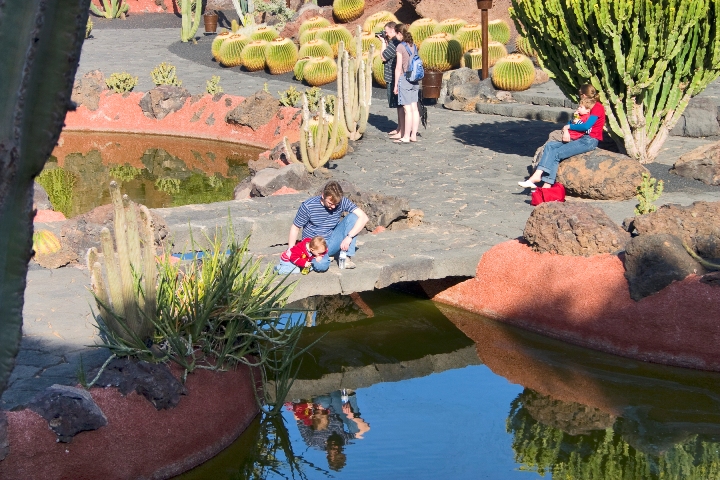
Jardin de Cactus in Guatiza, one of César Manrique’s last works in Lanzarote, makes stunning use of a former gravel pit, encircling it in walls of lava stone, with an historic windmill perched at its rim. Nearly 10,000 cactus plants mix with big rough chunks and pillars of lava around pools of colorful fish. The result is astonishingly beautiful, and the view best enjoyed from the terrace café.
Written by Barbara Radcliffe Rogers for EuropeUpClose.com
